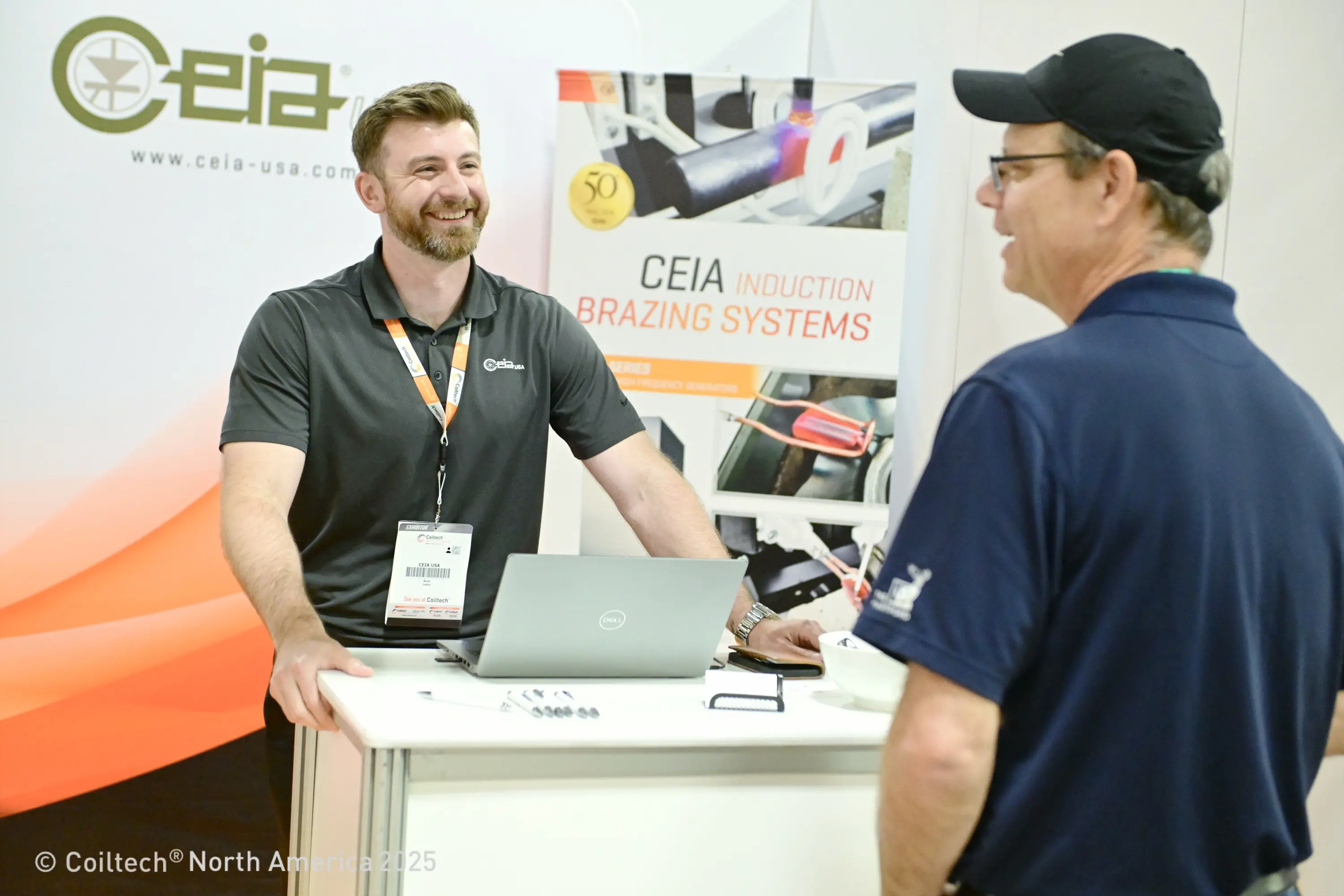- Home
- FAQ
Frequently Asked Questions
Got questions about induction heating? You're in the right place. Whether you're new to the technology or looking for specifics about applications, efficiency, or system setup, this FAQ covers the most common topics we hear from manufacturers and engineers alike.
A high-frequency alternating current runs through a copper coil, creating a magnetic field. When a metal part is placed inside or near the coil, this magnetic field induces electrical currents within the part, generating heat due to the material’s resistance. This process heats the metal quickly and evenly.
- Speed & throughput - Heat is generated inside the part, so ramps of hundreds of degrees are routine, slashing cycle times.
- Energy efficiency - >90 % of the delivered energy ends up in the workpiece; no standby losses, no combustion gases.
- Repeatability - Power, frequency, and time are electronically regulated, allowing for a precisely repeatable process.
- Localized heating - Only the target zone heats, protecting adjacent features, seals, or coatings.
- Cleaner & safer - No open flames, reduced surface oxidation, and a cooler plant environment.
- Easy automation - Solid-state generators integrate with PLCs, robots, and MES for lights-out production.
- Joining: brazing, soldering, shrink-fitting
- Heat treating: hardening, tempering, annealing, stress-relieving
- Forming: billet, bar, and tube pre-heat for forging, extrusion, and bending
- Bonding & curing: adhesives, paints, composites, cap-sealing
- Industries span automotive, aerospace, EVs, semiconductors, oil and gas, medical, consumer-appliance, and heavy equipment.
Yes, induction heating is considered a safe process. It eliminates the hazards associated with open flames, hot surfaces, and combustion. Because the heat is generated within the part, the surrounding environment remains cooler, and operators face a lower risk of injury.
Absolutely. Induction systems are highly adaptable and can be integrated into automated production lines, robotic cells, and conveyor systems. This enables manufacturers to scale their operations, reduce manual labor, and achieve repeatable results with minimal downtime.
Induction heating systems can heat almost all electrically conductive metals, including steel, stainless steel, copper, aluminum, and brass. Because heat is generated directly within the metal, both ferrous and non-ferrous materials reach target temperatures rapidly and uniformly. By adjusting coil design, frequency, and power output, induction technology ensures optimized performance across diverse industrial applications such as hardening, brazing, and forging.
First define the basics—part geometry and mass, alloy, target temperature profile (surface vs. through-heat), cycle-time window, and line-integration limits (footprint, utilities, controls). From those inputs we size:
- Power & frequency envelope – sets heating depth and speed
- Coil style – solenoid, channel, split, or custom form
To shorten the selection cycle, we offer complimentary application testing: send sample parts and our lab will design and trial a turn-key induction heating solution, log power-temperature data, and return deliverables to prove out your custom application.
Yes, it is one of the most energy-efficient heating technologies. Because heat is generated directly in the part and not transferred from an external source, very little energy is wasted. This efficiency leads to lower operating costs and a smaller environmental footprint.
CEIA USA provides comprehensive support, including system design, application testing, coil development, and integration assistance. On-site training and troubleshooting are also available to ensure your team can operate the system with confidence.
Yes, induction heating works on aluminum. Although aluminum is non-magnetic, its high electrical conductivity enables effective heating via eddy currents. Because of its rapid heat dissipation, successful aluminum heating depends on proper frequency selection and coil design. Our medium- to high-frequency systems are well-suited for aluminum brazing, forming, and other precision heating applications.
Selecting the proper induction heating frequency and power level depends on your material type, part geometry, and heating goals. Low frequencies provide deeper heat penetration for larger parts, while high frequencies focus energy at the surface for precision surface hardening. Our induction heating experts help determine the optimal parameters to deliver consistent heat profiles, maximum process efficiency, and repeatable results for your industrial manufacturing process.
A complete induction heating system includes a power supply, induction coil, remote heating head, and a closed-loop water-cooling unit. The power supply delivers a controlled high-frequency alternating current to the coil, generating a magnetic field that transfers heat to the part. Temperature controllers, pyrometers, and cooling systems ensure safe, reliable, and energy-efficient operation even in continuous or high-production environments.
Induction heating technology is widely used in industrial manufacturing for applications such as heat treating, hardening, brazing, annealing, forging, shrink-fitting, and preheating. It delivers precise, consistent heating with minimal distortion and integrates easily into automated production lines. Industries such as automotive, aerospace, electronics, and metal fabrication rely on induction systems for their high performance, repeatability, and energy efficiency.
Yes. Induction heating systems are significantly more energy-efficient than conventional furnaces because they generate heat directly inside the workpiece rather than through external elements. This reduces heat loss and accelerates heating times. Many industrial induction applications achieve efficiencies exceeding 90%, cutting operating costs, improving process sustainability, and supporting eco-friendly manufacturing initiatives.
Skin depth refers to how deeply the induced currents and resulting heat penetrate into a material. Lower frequencies allow deeper penetration for through-heating, while higher frequencies concentrate heat at the surface for surface hardening or brazing. By carefully selecting the right frequency and power settings, induction heating provides precise control over heating depth, ensuring accurate temperature uniformity and repeatable results for any industrial application.
Yes. Induction heating systems are exceptionally safe, clean, and environmentally friendly. Because heat is generated within the metal part itself, there are no open flames, combustion gases, or exposed heating elements. Modern induction power supplies feature thermal protection, electrical interlocks, and EMF shielding to maintain operator safety. When used correctly, induction systems provide a controlled, reliable, and low-maintenance heating process.
Designing an induction heating coil requires understanding the part geometry, material composition, and target temperature. Proper coil spacing, turn count, and cooling design are essential for achieving uniform heating and maximum energy efficiency. Since every industrial heating process is unique, coils are typically custom-engineered to optimize performance, consistency, and equipment lifespan. Our experts work with you to develop application-specific coil solutions that enhance process reliability.
Induction heating equipment requires minimal maintenance when operated properly. Routine checks should include inspecting coils and connections, cleaning the work area, and maintaining the water-cooling system for optimal flow and temperature. Regularly checking filters, seals, and fluid levels ensures long-term reliability and consistent thermal performance. With proper care, induction heating systems offer years of dependable, high-efficiency operation in demanding industrial environments.
Free Application Analysis

Complimentary sample testing

Fast Quotes
